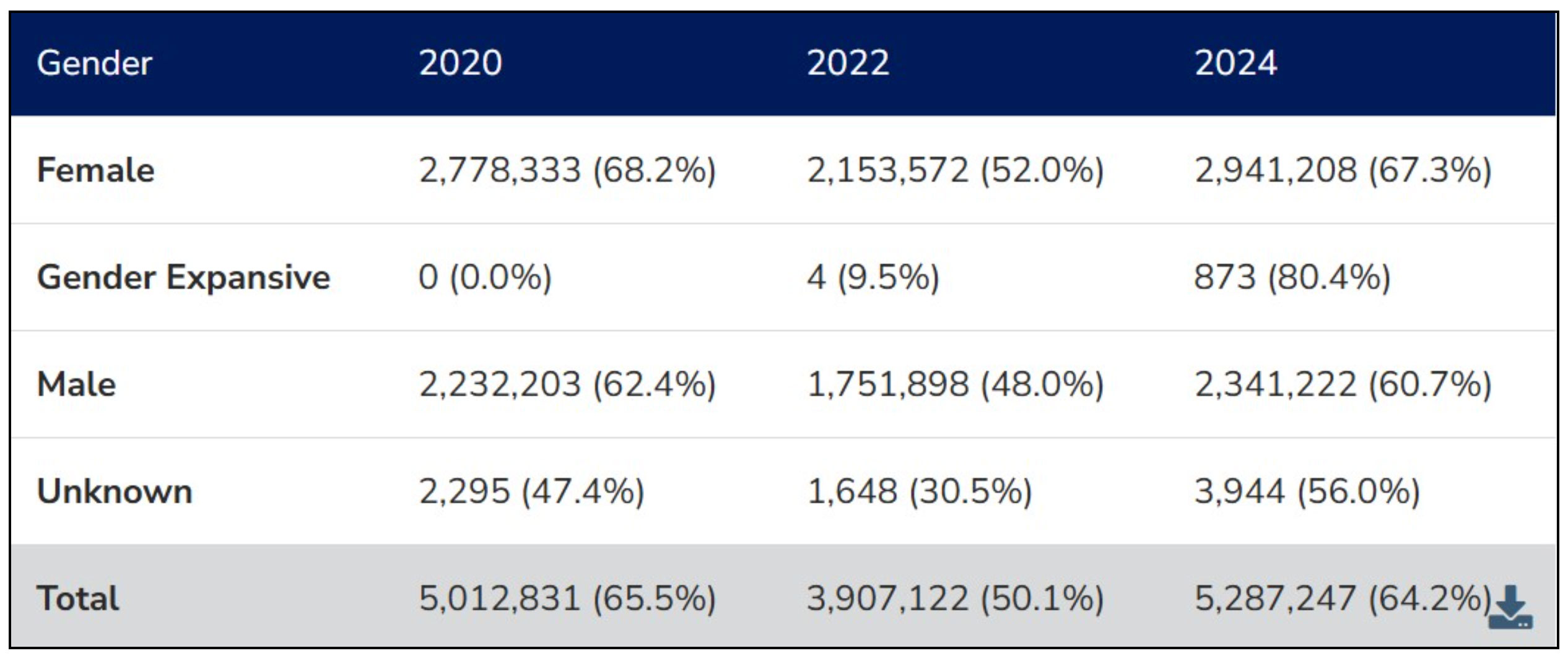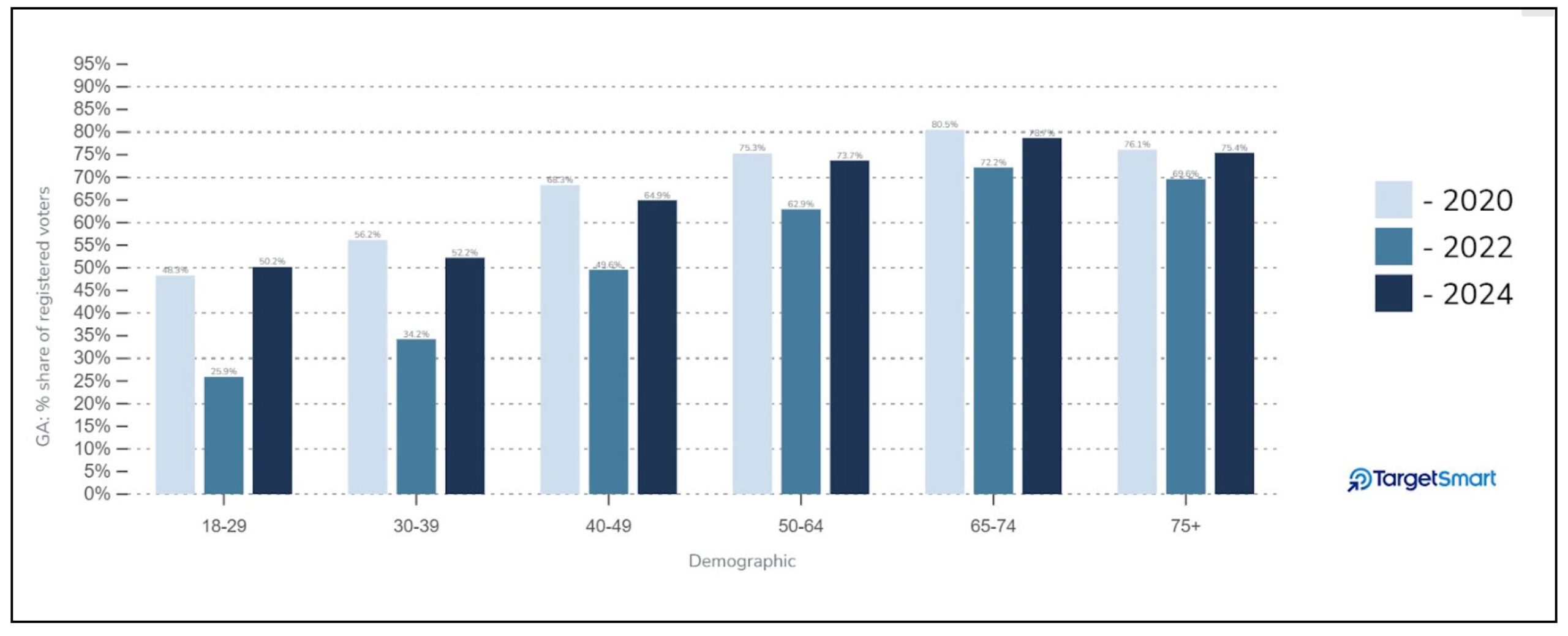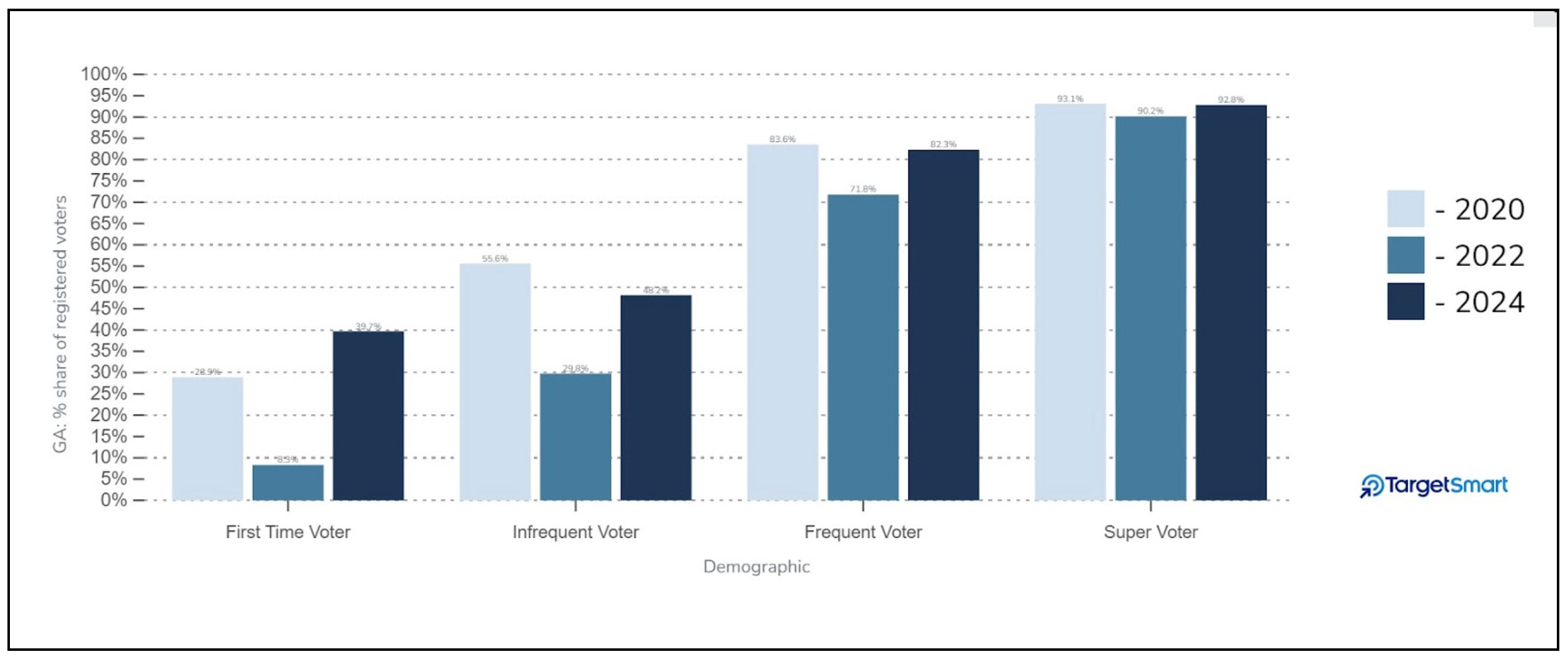While the results of the election were not what many of us were hoping for, we knew all along that it was going to be a super close race and would come down to who turned out on Election Day. And now, with the full individual turnout data in from battleground Georgia (hat tip to their Election officials for being so efficient) we’re able to learn more about who showed up, or didn’t, ultimately delivering President Trump a second term. So let’s take a look at what we saw, which might surprise some of you.
Gender Gap
- Despite Georgia flipping to Trump, the gender gap (which was already massive in 2020) actually grew by almost half a point, because turnout (as a % of registered voters) dropped by only 0.9% among women, vs 1.7% among men.

The Youth Vote
In the weeks leading up to the election, we highlighted how important young voters would be in delivering a Democratic victory and how there was evidence that Vice President Harris’ ascension to the top of the ticket had created a renewed energization. Well, the youth turnout in Georgia was stellar:
- From a share perspective, voters under 30 held even with 2020 (a record year), where they were 16.2% of the total turnout.
- To take it a step further, looking at turnout as a percent of registered Georgia voters, the under age 30 group was the only age group to see turnout increase over 2020!
- It increased by 1.9 pts, while every other group saw a decline.

- So, you might be wondering, was this increase in youth turnout in GA fueled by the young men targeted by the Trump campaign?
- It sure doesn’t seem that way. Young women increased their turnout by 2.2 pts, as compared to 1.5 pts among young men.
A Change in the Electorate
One of the most striking things I’ve observed so far from this Georgia data is just how different the electorate looked this cycle as compared to 2020.
- Almost 1 in 5 voters were first-timers – nearly 1 million people – which was nearly double the number from 2020. And this was fueled primarily by Black and Latino voters, while white voters accounted for a smaller share of first time voters, relative to 2020.
- And when looking at turnout by race, regardless of age, we find only white turnout increased over 2020. Yet, when we look at vote share, we see that the white share dropped by 1.5 pts, and the Black share by 0.3 points, while AAPI and Hispanic voters saw increases in their vote share, driven by an increase in voter registration.
- In addition, there was a major shift in turnout among those in rural, suburban and urban communities. For instance, rural vote share increased by 4.3% over 2020 while suburban share decreased by 1.8% and urban share fell 2.4%. There were 323,252 more votes cast in rural parts of the state in GA in 2024, and 75,489 fewer votes cast from urban areas.

Taken together, we saw a more female and less white electorate relative to 2020, and impressive turnout from young voters and those in rural communities. Moving forward, it’s up to Democrats to figure out why, both on the state by state and national level. In the weeks ahead, we’ll continue to analyze the turnout data across the battleground states as we have it. Stay tuned.



